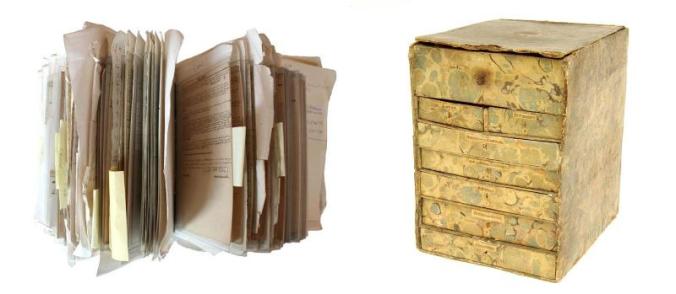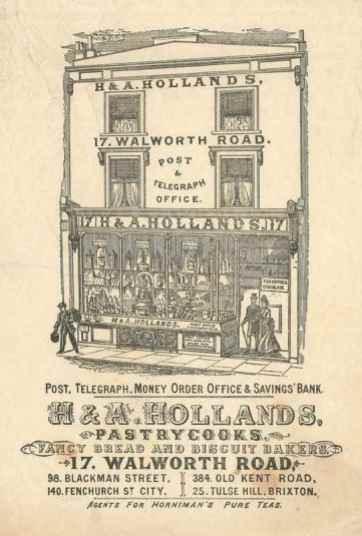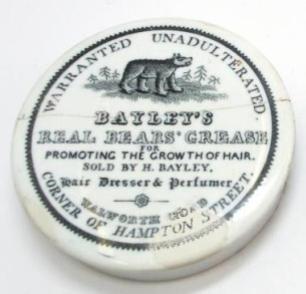Southwark’s historic villages: Walworth
The name Walworth is Saxon in origin and has been recorded at various times as Wealhworth, Wealawyr, and in the Domesday Book, Waleorde. It translates roughly as ‘farm of the Britons.’ The name Newington is thought to have been given more specifically to the area around the church, which stood on Newington Butts, where the road bends to the south-west. The buildings erected around it in the middle ages gradually acquired the name of ‘the New Town’ and the parish as a whole was named St Mary Newington.
The area around this junction is also known as Elephant and Castle. This name comes from the coaching inn that once stood at the crossroads where we now have the roundabout and the Faraday memorial. As with other inns at major transport intersections, such as the Angel and the New Cross, the Elephant and Castle gave its name to a railway station and is now used to refer to the surrounding area more generally.

The Elephant and Castle c.1860
One of the earliest references to the manor of Walworth is its presentation as a gift by Edmund II to a court jester named Hitard in c.1016. Hitard in turn made the lands of Walworth over to the monks of Canterbury Cathedral and to this day certain parts of Walworth are still owned by the Church Commissioners.
Walworth was once famous for producing and selling fresh fruit and vegetables. Much of the area consisted of orchards and gardens where special varieties such as the Newington Peach were grown. In 1792 James Maddock, florist, of Walworth published The Florists’ Directory; or Treatise on the Culture of Flowers. At about the same time John Abercrombie published a book on flowers which included an account of the then newly introduced chrysanthemum. Walworth was also known far and wide for the Surrey Zoological Gardens, which from 1831 occupied the grounds of the former manor house.
Two particularly remarkable residents of Walworth were Richard Cuming and his son, Henry Syer Cuming. Between them, during the late 18th and the 19th century, they acquired all kinds of objects from around the world, which became the Cuming Museum.

The Cumings’ original catalogue and Richard Cuming’s childhood collection
The 18th and early 19th centuries brought many changes to Walworth. New bridges over the Thames and improved roads made it easier for richer people to live just outside of London and commute into town every day by carriage. They would have occupied grand Georgian houses like those still standing in Surrey Square. The Elephant and Castle area became a thriving shopping area with its own department store, Tarns, and many other places to spend money on clothing and cosmetics.
Factories, warehouses and railways replaced many houses in the centre of London, which meant that London’s overflowing population spread out into Walworth. As a result, Walworth changed from a small community into a highly populated area. In 1801 there were 14,800 people in Walworth. By 1901 the figure had risen to 122,200, much higher than it is now, which shows how cramped conditions must have been. It is no wonder that in the 1880’s and 90s poverty increased. For the poorest in Walworth this meant being admitted to the Newington Workhouse. In 1896 a seven year old Charlie Chaplin briefly became an inmate there, with his mother, Hannah and half-brother, Sydney.
In response to this legacy of poverty Walworth became the location for some pioneering social work and services. It boasted the first family planning clinic in the country, while its celebrated health services department in Walworth Road brought all health facilities under one roof for the first time in London and preceded the NHS by ten years. The Clubland youth club, which started in rooms below the Walworth Methodist Church in 1922 provided life changing opportunities for thousands of teenagers in the area and improved public attitudes both to young people and to the less privileged in society.
The first and second World Wars saw Walworth take heavy casualties both civilian, during the London bombing, and in the field. The Elephant and Castle area was so ravaged by bombing that it had to be rebuilt practically from scratch, although the Metropolitan Tabernacle managed to survive the Blitz unharmed. Post-war planning by the London County Council resulted in The Elephant & Castle traffic scheme and the Elephant and Castle Shopping Centre, the first covered shopping mall in Europe. Today we are seeing more dramatic changes to the landscape. Whatever the outcome, Walworth will remain an important focal point for Southwark, attracting travellers from all over London and the world.

The Elephant and Castle during redevelopment, 1963


